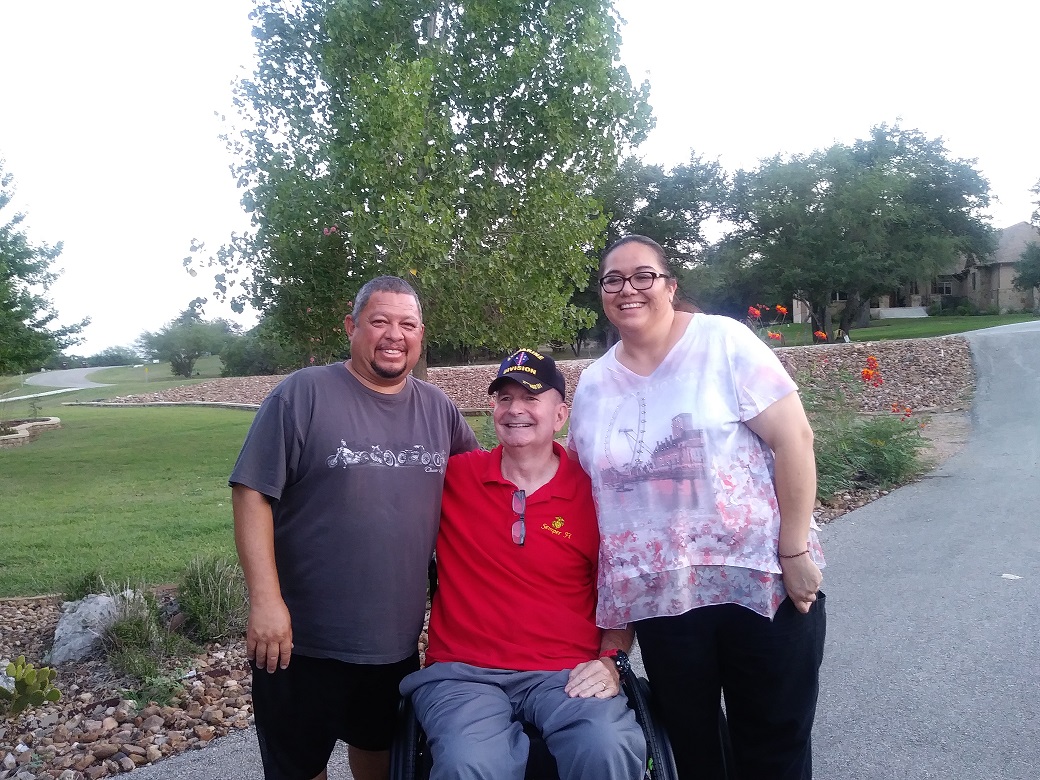


Posted November 8, 2019
Army Veteran Willie Reyes was dealing with troubling symptoms — memory loss, impaired hearing, dizziness and erratic emotions. They began after he had a seizure and they were becoming increasingly difficult to manage. To make matters worse, doctors were unable to give him an exact diagnosis, or even a possible explanation. Medical tests indicated he had unspecified brain inflammation. He and his wife, Sandra, turned to the Netflix series, Diagnosis, for assistance. The show introduced them to people with experience in identifying, and living with, Gulf War illness (GWI). GWI is characterized by multiple, diverse symptoms that typically include chronic headache, widespread pain, cognitive difficulties, debilitating fatigue, gastrointestinal problems, respiratory symptoms, sleep problems, and other abnormalities that are not explained by established medical diagnoses or standard laboratory tests. The population of Veterans affected by GWI is a subset of the nearly 700,000 U.S. Warfighters who served during the 1990-1991 Gulf War (Operation Desert Shield/Desert Storm). Now the Reyes family is exploring the possibility that Willie’s health issues are related to GWI and his service in the first Gulf War.

Photo courtesy of Dr. Kimberly Sullivan
Diagnosis, is a documentary-style show hosted by Dr. Lisa Sanders, a physician and New York Times magazine columnist who writes about difficult medical cases. In the series, she relies on the Internet and crowdsourcing to help find answers about mystery illnesses. In Willie’s case, she consults Dr. Kimberly Sullivan of Boston University and David Winnett, USMC (Ret.). Both have done extensive work with CDMRP’s Gulf War Illness Research Program (GWIRP). The GWIRP was initiated in 2006 to provide support for research of exceptional scientific merit to study the health effects of deployment on U.S. Warfighters during the 1990-1991 Gulf War. The GWIRP challenges the scientific community to design high-impact research that will improve the health and lives of Veterans who have Gulf War illness (GWI). Dr. Sullivan received one of the first awards from the program looking at structural MRI and cognitive correlates in Gulf War Veterans, finding differences in brain white matter volumes related to pesticide exposures. From 2012 to 2019, she has led a large research consortium funded by the GWIRP and is making great strides elucidating brain-immune interactions as the underpinnings of GWI. Most recently, Dr. Sullivan was awarded a multi- million dollar grant from the GWIRP to launch the Boston Biorepository, Recruitment, and Integrative Network (BBRAIN) for GWI. Mr. Winnett, who lives with GWI, served as a consumer reviewer and programmatic panelist for GWIRP for 8 years, ensuring the ill Gulf War Veteran perspective is always integrated into the research focus. In the show, he shares his own experiences with GWI and tells Willie, “Based on the story I read in the New York Times about your symptoms and how they came on — to me, it’s classic Gulf War stuff. It really is.” (View the CDMRP video David Winnett — a Consumer’s Perspective: Always Faithful here: https://cdmrp.health.mil/gwirp/default.)
“Hearing David's story helped us out so much as he gave us the info to the WRIISC (War Related Illness and Injury Study Center) and most importantly became our friend,” says Sandra. He gave us advice as to what Gulf War (Illness) is and how his symptoms had similarities to Willie's. He confirmed to us that we are not alone and that Willie was not crazy for suffering this and not having a diagnosis. Seeing them both was like watching two kids talk about video games because Mr. Winnett would mention a place or location while in Desert Storm and it slowly came back to Willie.
“Mr. Winnett did not mind seeing Willie break down as he is very emotional and is set off very quickly. Mr. Winnett made him so comfortable. He also told us to never give up, and that has stayed with Willie,” Sandra says.
According to Dr. Sullivan, “Gulf War Illness affects a third of Gulf War Veterans. It’s about 250,000 Veterans. It’s a lot,” she says. Despite the fact that so many have symptoms, diagnosing GWI is still difficult. Researchers are looking for biomarkers in brain imaging or in the blood that can objectively identify GWI. “The significance of identifying biomarkers is twofold. They make it easier for our Veterans to get benefits and then we can target treatments appropriately for them,” says Dr. Sullivan. She has been working on GWI for more than 20 years and says that promising treatments are within reach. They include repurposing drugs that are already on the market to reduce brain inflammation and the use of nutraceuticals such as CoQ10 to bring therapies to veterans faster.

Photo courtesy of Sandra Reyes
Dr. Sullivan and Mr. Winnett share the goal of connecting veterans with medical resources. Mr. Winnett says he also knows firsthand, the importance of emotional support and social networking. “I have found that connecting with other Veterans who, like me, suffer from medical conditions arising out of toxic exposures during the 1991 Persian Gulf War is a form of therapy. For myself, and for the other Veterans. In fact, that’s the reason I created the closed Facebook group “Gulf War Illnesses” almost ten years ago. My group, now numbering over 13,500 members, is the largest private page on Facebook centering on the topic of Gulf War Illness. I created the group, and I continue to serve as its sole administrator,” he said.
While he still does not have a definitive diagnosis, Willie is receiving some treatment through the VA. Sandra says her family is encouraged by the people they have met as they continue to search for answers. “I just wish there was an easier way to diagnose GWI. These guys were exposed to so much out there and the fact that some showed symptoms right away and others didn't makes it so much harder for a diagnosis. It has just been very frustrating. But we will keep our faith and hope for the best.”
Last updated Friday, December 13, 2024














